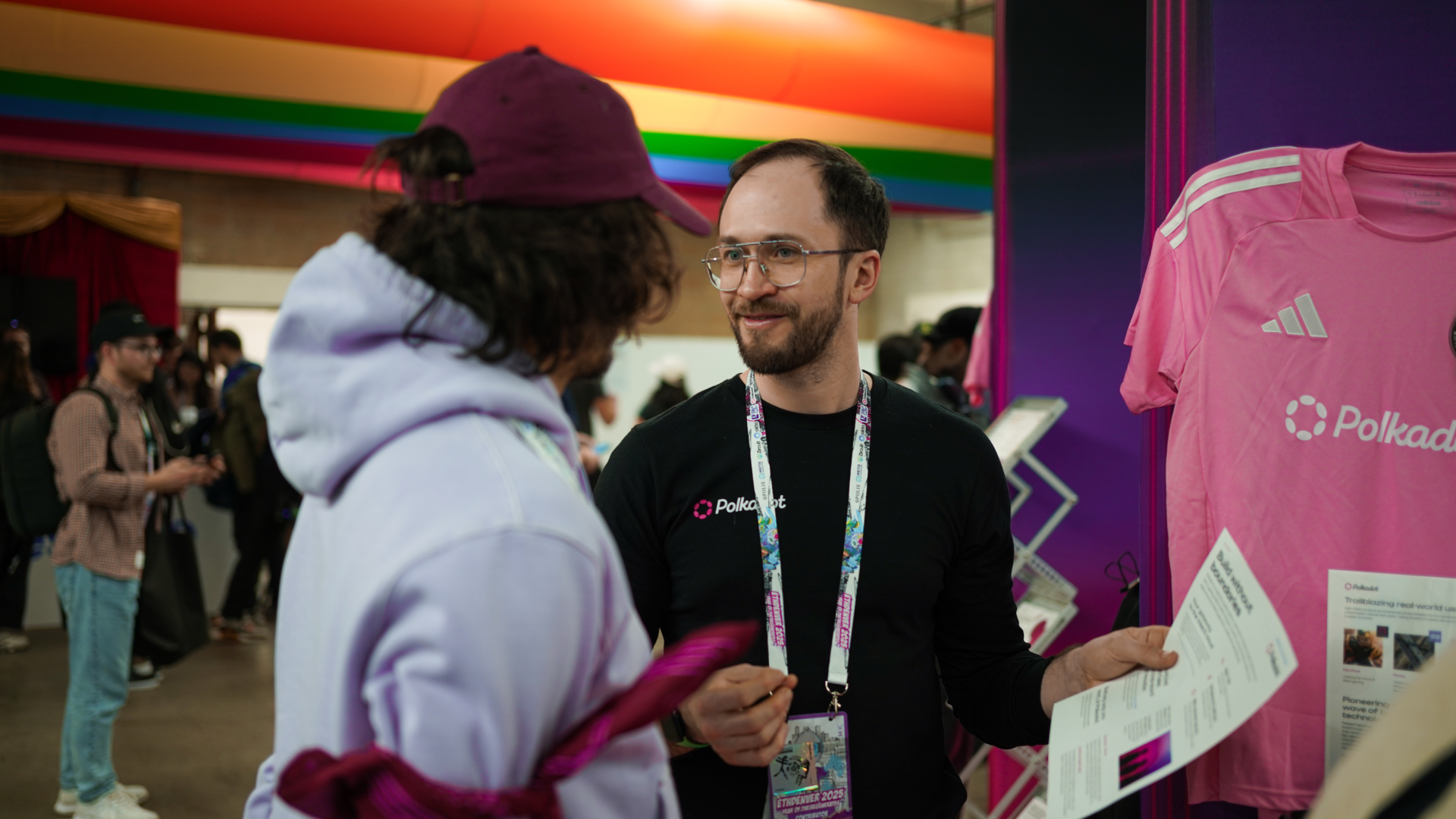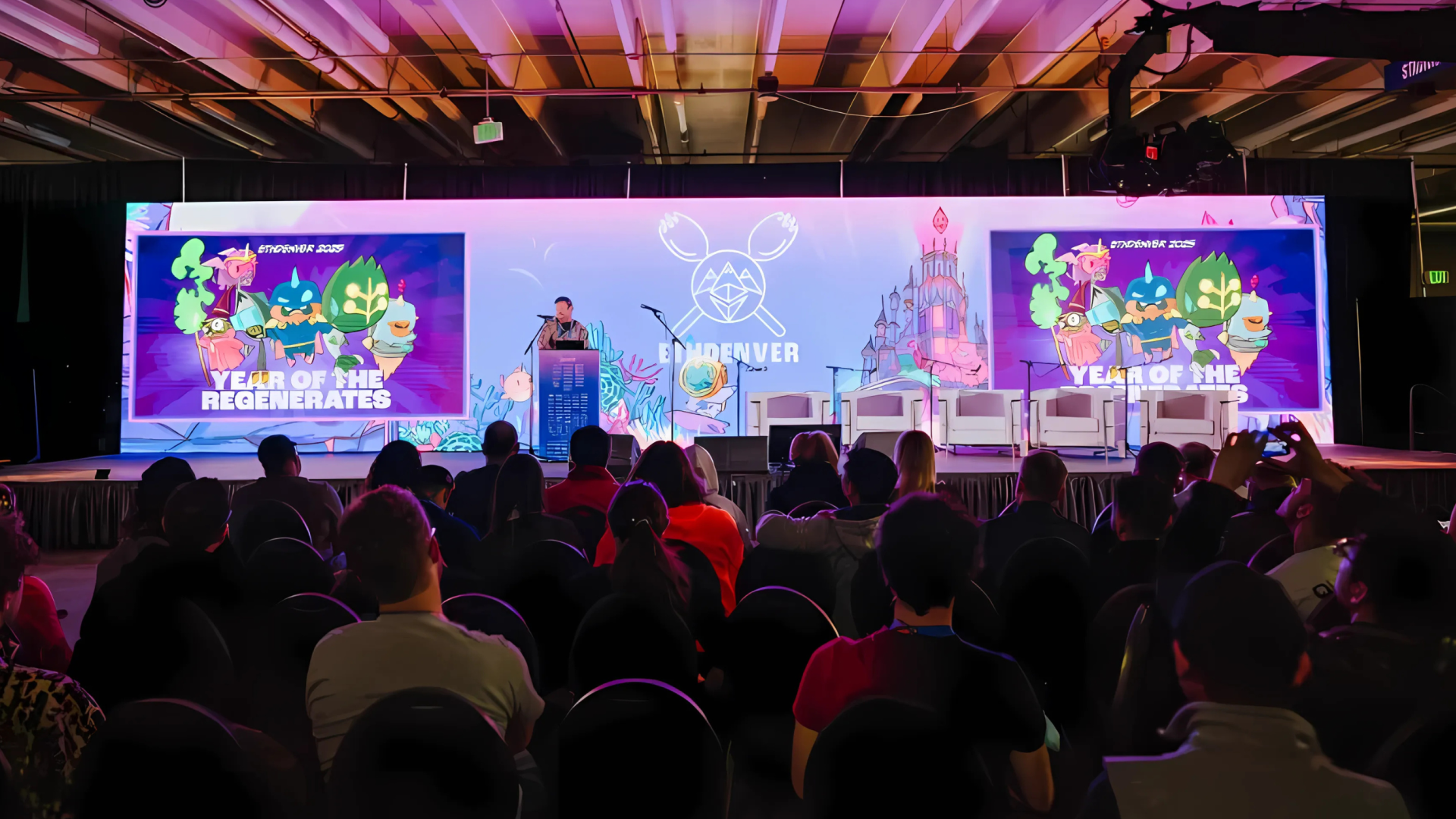Kusama’s First Batch of Parachains: An Interview with the Teams
This blog contains information provided by the projects Karura, Moonriver, Shiden, Khala, and Bifrost, in order of when they won their parachain slot. Discover what network each does, their achievements so far, and the phases ahead on their respective roadmaps.
 By Polkadot•August 31, 2021
By Polkadot•August 31, 2021
An intense period of activity followed the announcement of Kusama’s first parachain auctions. Projects geared up to participate, the auctions played out and all 5 slot winner onboarded to the network. Since then, each has been working through their relative launch phases, network performance monitoring has taken place, and the second round of slot auctions proposed already. With the next wave of parachains auctions incoming, it’s high time for an update on the first batch of auction winners and what they’ve accomplished since winning a parachain slot.
This blog contains information provided by the projects Karura, Moonriver, Shiden, Khala, and Bifrost, in order of when they won their parachain slot*. Discover what each network does, their achievements so far, and the phases ahead on their respective roadmaps.
Karura
According to their webpage, Karura is the all-in-one DeFi hub of Kusama. Founded by the Acala Foundation, Karura is a scalable, EVM-compatible network optimized for DeFi. The platform offers a suite of financial applications including a trustless staking derivative (liquid KSM), a multi-collateralized stablecoin backed by cross-chain assets (kUSD), and an AMM DEX – all with micro gas fees that can be paid in any token.
What upgrades have you done on Kusama thus far?
We (Karura) completed the following upgrades:
- A Karura Runtime Upgrade disabled the Sudo (super-user) key and enabled token transfers
- Listed KAR/KSM pair via bootstrap on Karura Swap
- A Karura Runtime Upgrade enabled KSM as a fee, stablecoin, and NFT
- Enabled kUSD stablecoin minting with KSM as collateral
- Listed KSM/kUSD as a pair on Karura Swap
- Incentive program (KAR/KSM & KSM/kUSD Pools)
- Enabled kUSD (KSM as collateral) and listed the KSM/kUSD pair and incentive program
- Urgent runtime upgrade fixed a stability fee bug
Onchain events are available here, and all of Karura’s upgrade governance proposals can be found on the Acala and Karura forum.
What upgrades do you have planned?
To enable new features and upgrade Substrate versions.
What upgrades do you have planned until the end of the year?
The next steps for Karura include enabling Liquid KSM (LKSM), continuing to add more pairs to Karura Swap, launching our BTC and ETH bridges, and enabling the Acala EVM on Karura. The full launch roadmap can be found here.
Have you done any cross-chain transfers? If so, how many thus far and to which chains?
The following KSM transfers have been completed:
While there are already thousands of cross-chain transfers between Kusama & Karura, this is the first generic message to dispatch from Karura to Kusama. This successfully demonstrated the feasibility of a decentralized staking pool via XCM.
- Total transactions: 116,858
- Total Karura accounts: 59,689
- 7 day decentralized exchange volume: $200M
Any other cross-chain collaborations you have done or are working on?
We are working with all live parachains on supporting token transfers between parachains. This team already has a working proof of concept (PoC).
Moonriver
According to their website, Moonriver is a “Community-Led Sister Parachain on Kusama. Moonriver is a companion network to Moonbeam and provides a permanently incentivized canary network. New code ships to Moonriver first, where it can be tested and verified under real economic conditions. Once proven, the same code ships to Moonbeam on Polkadot”.
What upgrades have you done on Kusama thus far?
We (Moonriver) completed at least six upgrades so far on Kusama, and we plan to do a lot more. Upgrades include expanding the active collator set — who are already producing blocks — to 32, enabling the governance feature, and removing Sudo.
We completed Phase Three of Moonriver’s launch process, in which token holders can start taking control of the network via on-chain governance. We also completed Phase Four of the Moonriver Network launch process, and balance transfers and EVM are now enabled. This means the network is fully launched and operational on Kusama.
What upgrades do you have planned until the end of the year?
There will be multiple upgrades this year. We plan to take full advantage of the built-in and forkless upgradability of Moonriver provided by Substrate. Some of the upgrades planned (in no particular order) include:
- Multiple performance improvements
- Support for EIP1559
- Cross-chain asset support for KSM
- Cross-chain asset support for KAR, kUSD
- Cross-chain support for relay chain functionality
What's your near-future roadmap? What's next?
Having enabled balance transfers and EVM, projects currently building on Moonbase Alpha (our TestNet) will start deploying to Moonriver and gain access to the Kusama Network. We are excited to see how the Moonriver ecosystem of integrations and community will develop!
Have you done any cross-chain transfers? If so, how many thus far and to which chains?
We had held off on significant cross-chain transfer work since we knew that XCM was under heavy development and would face substantial changes. However, now that XCM is stabilizing, doing cross-chain transfers is on the front burner for us. So the first targets are KSM and bi-directional integration with Karura for KAR and kUSD to come to Moonriver and MOVR to go to Karura.
Any other cross-chain collaborations you have done or are working on?
The Kusama-facing native integrations are one track of execution; we also have a large number of outward-facing integrations to other non-Kusama chains. There are ERC20 bridges such as Meter Passport, which connect us to Polygon, Ethereum, and BSC.
The integration networks we are working with, such as Axelar, will provide connectivity to Ethereum and Terra when launched. There are also use case-specific bridges like myNFT designed specifically for transferring NFT assets from Ethereum to Moonriver, etc.
Shiden
According to their website, Shiden is a multi-chain decentralized application layer on Kusama Network. The Kusama Relay Chain does not support smart contract functionality by design - Kusama Network needs a smart contract layer. This is where Shiden Network comes in. Shiden supports Ethereum Virtual Machine, WebAssembly, and Layer2 solutions from day one. The platform supports various applications like DeFi, NFTs, and more.
The following information is correct as of August 14, 2021.
What upgrades have you done on Kusama thus far?
After becoming a Kusama parachain, we have done the following updates:
- Upgraded Shiden’s runtime version: the collator runtime was upgraded to work with the latest version of Kusama
- Enabled the batch call module: tx fees for vesting tokens adjusted and batch util module was enabled
- Distributed Kusama crowdloan rewards - the auction contribution rewards were distributed via the vesting pallet
- Implemented PoS
What upgrades do you have planned until the end of the year?
Shiden Network is going to be fully functional by the end of September. We will support both EVM and WASM as well as dApp staking and an Ethereum bridge. By the end of this year, we (Shiden) are sure that we will finish some XCMP use cases, and our Astar Network Portal, the first product made by Stake Technologies will be fully ready.
What's your near-future roadmap? What's next?
As a next step, Shiden is going to become an NPoS network and support EVM and Ethereum bridge. In the middle run, we will support WASM so that users can use both EVM and WASM seamlessly.
Have you done any cross-chain transfers? If so, how many thus far and to which chains?
Not yet but we have done the first XCMP transfers with Acala on Rococo.
Khala
According to their website, Khala is Phala’s Canary Network. Phala aims to become a Polkadot parachain that allows developers to invoke and interact with confidential contracts on other Polkadot parachains.
What upgrades have you done on Kusama thus far?
Khala went live after winning a Kusama slot auction in mid-July. There is a detailed description for the network launch evolution, separated over 4 ‘ages’.
01 — Triassic Age (Completed)
- Phala Network won the public Khala slot auction, claiming the 4th Kusama parachain slot.
02 — Jurassic Age (Ongoing)
Completed:
- Released Phala wallet and distributed 24,961,006 K-PHA to crowdloan contributors and early miners.
- Launched Ethereum >> Khala one-way bridge for PHA on August 6th—users can transfer ERC-20 PHA to K-PHA in a decentralized way with no fee beyond an Ethereum transaction fee. It’s the first official parachain-Ethereum bridge in the Substrate ecosystem. The bridge has passed an audit by CertiK, the world’s top blockchain security company.
Ongoing:
- Currently, we have an Inner mining test which is ongoing in Para-1 testnet and will be open to the public soon. Then we will appoint communities of gatekeepers and professional council members by invitation.
What upgrades do you have planned until the end of the year?
Phala plans to finish all four phases of it’s network launch before the end of the year, including the Cretaceous Age (Phase 3), and the Holocene Age (Phase 4):
03 — Cretaceous Age
- A formal public vote on a proposal to add TEE workers and launch the TEE mining function on Khala Network.
- Start council member election and Sudo removal, giving the community complete authority to manage the community
- Enable transfer function — which means enabling $PHA to transfer into Khala network
04 — Holocene Age
- Launch the Ethereum-Khala two-way bridge for PHA simple transfers — ERC-20 PHA and K-PHA.
- Submit a proposal to add the PhaSe wallet for privacy protection and launch
- Add Acala, Plasm, and Statemint tokens into the PhaSe wallet
- Enable XCMP for cross-chain in the PhaSe wallet
What's your near-future roadmap? What's next?
We will release our TEE mining test to the public then begin to vote for Phala’s new eco model. When it is passed, we intend to officially launch Khala Network with TEE mining.
Therefore, we plan to finish the following within the near-future (two months):
- TEE mining test (August)
- TEE mining launch in Khala (September)
- Remove Sudo and enable transfer function (September)
Have you done any cross-chain transfers? If so, how many thus far and to which chains?
Yes, Phala has launched Ethereum >> Khala one-way bridge for PHA, which means Phala cross-chain bridge steps into a new milestone. Now users can transfer ERC-20 PHA to K-PHA in a decentralized way in the first official parachain-Ethereum bridge in the Substrate ecosystem. And in the future, Phala will launch more chains, not just limited to the parachain in the Substrate ecosystem but also on a top chain in the crypto industry.
Any other cross-chain collaborations you have done or are working on?
Indeed, we're planning to build bridges to the BTC family blockchain, Diem, BSC, Heco, Solana, etc. And we’re working in the Substrate ecosystem with chains like Acala, Plasm, and Statemint. In the future, we will launch XCMP for cross-chain functionality in the PhaSe wallet.
Bifrost
According to their wiki, Bifrost is a DeFi protocol that connects with Polkadot and different PoS blockchains to provide staking derivatives though XCMP or smart contracts.
What upgrades have you done on Kusama thus far?
On 20th July 2021, Bifrost upgraded collators to v0.9.8 and successfully finished the parachain onboarding. Since the treasury has not opened yet, we did the first Kusama update to remove the function of the Bifrost parachain fee, enabling us to send all crowdloan rewards to contributors. It will be reopened once the governance is enabled.
What upgrades do you have planned until the end of the year?
Sudo removal
What's your near-future roadmap? What's next?
We (Bifrost) estimate the following nine motions to enable basic functions around governance, SALP, and the native token $BNC, during the upgrade process:
Motion 1: Remove Sudo. Once the Sudo key is removed, the following Runtime upgrades will be implemented through democracy and council via proposals.
Motion 2: Enable vsKSM & vsBond transfer
Motion 3: Enable SALP module
Motion 4: Enable vsKSM & vsBond Mining
Motion 5: enable SALP Bancor - The 5,613.129 KSM reserved during the Bifrost crowdloan will be distributed.
Motion 6: Enable Swap Module -Support BNC, vsKSM, KSM swap, and liquidity providers. Stablecoins, and vETH. Other heterogeneous blockchain assets will be added in the future.
Motion 7: Enable vsBond Market -Support pending order trading requirements of vsBond.
Motion 8: Enable $BNC transfer and Treasury -BNC Vesting begins unlocking and parachain fees flow to the Treasury.
Motion 9: Enable Swap Liquidity Mining
Have you done any cross-chain transfers? If so, how many thus far and to which chains?
Not yet, but we will definitely do the double relay-chain cross-chain transfer with Bifrost, to achieve the SALP decentralized contribution through XCM.
Any other cross-chain collaborations you have done or are working on?
Yes, we’re currently partnered with Karura and intend to do the derivative loan business soon. Meanwhile, we’ll also achieve a cross-chain transfer with Statemine, enabling the derivative mining with projects that issued a native token on Statemine, such as Zenlink.
A Positive Start for Interoperable Parachains
The team’s updates paint an encouraging picture. Each project is moving with a good pace through their relative launch phases and several parachains have achieved cross-chain communication already. The milestones achieved in the short time since winning a slot adds credibility to each team’s projections for the future and serves as an encouraging sign for wider parachain rollout.
Parachains' utility as a solitary chain can be substantial, but for most, their true value can only be realized once a community of interoperable parachains is available. Shortly, when the next batch of parachain auctions has played out, eleven parachain’s will have connected to the Kusama Relay Chain, signaling a new chapter for the network and taking us one step closer to the multi-chain future – an internet of interoperable blockchains.
*Information was solicited from teams August 13-14, 2021. Some of the teams’ answers have been edited for brevity and clarity, or to keep the information up to date











